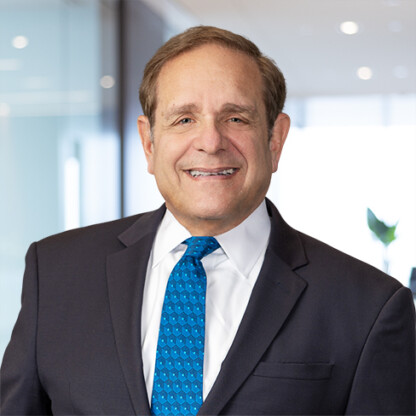U.S. Department of Labor Issues Additional Guidance on Families First Coronavirus Response Act

The U.S. Department of Labor’s Wage and Hour Division (“DOL”) published additional Q&As regarding the Families First Coronavirus Response Act (“the Act”) on March 26, 2020, which address some of the open issues regarding the mechanics of leave under the Act. Foley & Lardner’s Coronavirus Task Force outlined the DOL’s initial March 24, 2020 guidance on the Act here.
Quick Debrief: The Act takes effect April 1, 2020; covers private employers with fewer than 500 employees (and certain public employers); and provides varying amounts of paid leave in the form of Emergency Paid Sick Leave (PSL) and Emergency Family and Medical Leave (EFML).
There are six qualifying reasons that will trigger PSL or EFML (or both) obligations:
- The employee is subject to a Federal, State, or local quarantine or isolation order related to COVID-19 (PSL only);
- The employee has been advised by a health care provider to self-quarantine related to COVID-19 (PSL only);
- The employee is experiencing COVID-19 symptoms and is seeking a medical diagnosis (PSL only);
- The employee is caring for an individual subject to an order described in (1) or self-quarantine as described in (2) (PSL only);
- The employee is caring for his or her child whose school or place of care is closed (or child care provider is unavailable) due to COVID-19 related reasons (PSL and EFML); or
- The employee is experiencing any other substantially similar condition specified by the U.S. Department of Health and Human Services (PSL only).
Key Points from the WHD’s Additional Q&A are Outlined Below:
What Are the Documentation and Recordkeeping Obligations for PSL and EFML?
For PSL, the DOL guidance requires employers to obtain documentation including the employee’s name, dates of the requested leave, qualifying reason the requested leave, a statement that the employee is “unable to work, including telework” for that reason, and documentation supporting that reason (e.g., the source of the isolation order, the name of the healthcare provider telling the employee to self-quarantine, etc.).
For EFML, the DOL guidance requires supporting documentation just as employers would for conventional FMLA leave requests. The DOL cites examples of notices posted on government, school, or daycare websites, or an email from the school or childcare provider.
In either case, the DOL instructs employers to retain these documents if they intend to claim a tax credit.
The DOL also reminds employees that conventional FMLA certification requirements may still apply. If employees take conventional FMLA leave for one of the qualifying reasons (for example, they exhausted 80 hours of PSL and still suffer from a serious health condition related to COVID-19), employees must meet existing certification requirements under the FMLA.
What Does It Mean to Be Unable to Work/Telework?
The DOL clarifies that “teleworking” for purposes of the Act means that the employer permits the employee to work while at home or some location other than the normal workplace.
An employee is “unable to work, including telework” if the employer has work for the employee – but the employee cannot perform such work either at the workplace or by teleworking – due to one of the six qualifying reasons for paid leave under the Act.
However, if an employer and employee agree that the employee will work the normal number of hours but outside the normal schedule, the employee is considered able to work. Similarly, to the extent employees can telework while caring for their child(ren), PSL and EFML are not available. Finally, if an employer reduces an employee’s work hours due to a lack of work, the employee cannot use PSL or EFML for the hours the employee is no longer scheduled to work.
Can Employees Take PSL or EFML Intermittently?
With respect to intermittent leave, the DOL guidance differentiates between PSL and EFML, and between teleworking and working at the normal worksite.
Employees who are teleworking can take either PSL or EFML intermittently (in any increment) while teleworking, with the employer’s permission.
Employees who are not teleworking can take EFML intermittently, with the employer’s permission. The employer and employee must agree on the schedule.
Employees who are not teleworking must take PSL in full day increments. Whether it can be intermittent depends on the reason for the leave:
- Once the employee begins taking PSL for any qualifying reason other than childcare during a school closure/unavailable childcare provider due to COVID-19, the employee must continue to take the leave each day until it is exhausted or until the employee no longer has a qualifying reason to take it. This is because the intent of the law is for sick employees to stay home continuously to stop spreading the virus.
- In contrast, with the employer’s permission, an employee who is not teleworking can take PSL intermittently to care for a child whose school is closed/childcare provider is unavailable. Moreover, employers/employees can agree to intermittent leave on less than a full day basis for employees who are not teleworking and need to care for a child whose school is closed/childcare provider is unavailable.
Are Employees Entitled to Paid Leave Under the Act If the Workplace Closed?
According to the DOL guidance, if an employer closes a worksite, employees are not entitled to PSL or EFML. The guidance indicates this is the case regardless of (a) whether the worksite closed before or after April 1, 2020 (the effective date of the Act); (b) whether employees are “furloughed,”; (c) whether the employer says it will reopen in the future; or (d) whether the closure is due to lack of business or pursuant to a Federal, State, or local directive. If the worksite closes while an employee is on paid leave, the employee is no longer eligible for paid leave following the closure. The DOL guidance directs employees to seek unemployment compensation benefits for recourse in the event of a workplace closure.
This guidance on workplace closures raises a question of whether the ever-growing number of state and local “shelter in place” or “stay at home” orders trigger an obligation under the Act’s requirement to provide PSL when an employee is subject to a Federal, State, or local quarantine or isolation order related to COVID-19. Considering the Act’s clear mandate to provide PSL in that scenario, and the intent of the Act, the more prudent reading of the guidance is that employers need not provide leave under the Act to employees laid off as a result of the workplace closure even if the closure was based on a federal, state or local ordinance.
Does Health Coverage Continue During PSL or EFML?
Again, the DOL guidance distinguishes PSL from EFML.
For EFML, if the employer provides group health coverage and the employee elected such coverage, the employee is entitled to continue group health coverage for the duration of leave under the Act and on the same terms as if the employee was working. The DOL guidance instructs employees to check with employers regarding continued coverage in the event an employee does not return to work at the end of an EFML leave.
As for PSL, the employer must continue health coverage during the leave.
Does Leave Under the Act Run Concurrently with an Employer’s Preexisting Leave Policies?
Generally, no. Employees and employers must agree to use leave under the Act simultaneously with employer-provided leave. In other words, employers cannot “top off” paid leave under the Act with PTO that an employee had already accrued under the employer’s policy, except by agreement. Note, however, that the tax credits available under the Act are capped at the maximum amount of PSL or EFML and no tax relief is available for any agreed-upon top off.
Can Employees Collect Unemployment Insurance Benefits While Receiving PSL or EFML?
Generally, no. However, the DOL notes that each state has its own unique unemployment compensation rules, and that the DOL recently clarified additional flexibility for states extending partial unemployment benefits to works whose hours or pay has been reduced. The DOL guidance directs employees to their appropriate state workforce agency.
Of course, the COVID-19 pandemic presents an unprecedented and still-evolving legal landscape for employers. Therefore, the above interpretation is based on Foley & Lardner’s best judgment of available information in a rapidly changing and uncertain environment, and to that end we cannot guarantee that governmental authorities concur with the above. For more information about recommended steps, please contact your Foley relationship partner. For additional web-based resources available to assist you in monitoring the spread of the coronavirus on a global basis, you may wish to visit the CDC and the World Health Organization.
Foley has created a multi-disciplinary and multi-jurisdictional team, which has prepared a wealth of topical client resources and is prepared to help our clients meet the legal and business challenges that the coronavirus outbreak is creating for stakeholders across a range of industries. Click here for Foley’s Coronavirus Resource Center to stay apprised of relevant developments, insights and resources to support your business during this challenging time. To receive this content directly in your inbox, click here and submit the form.



